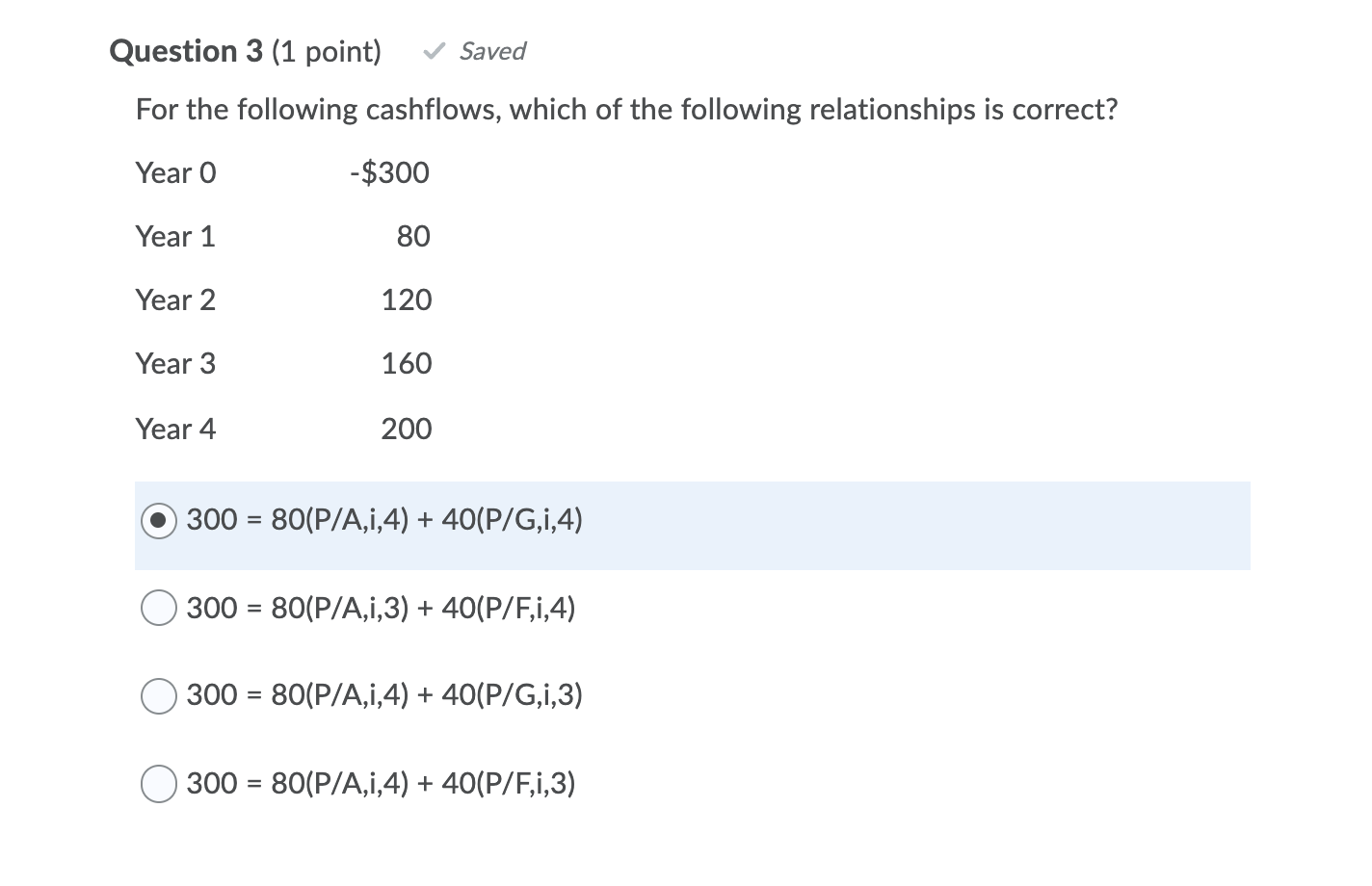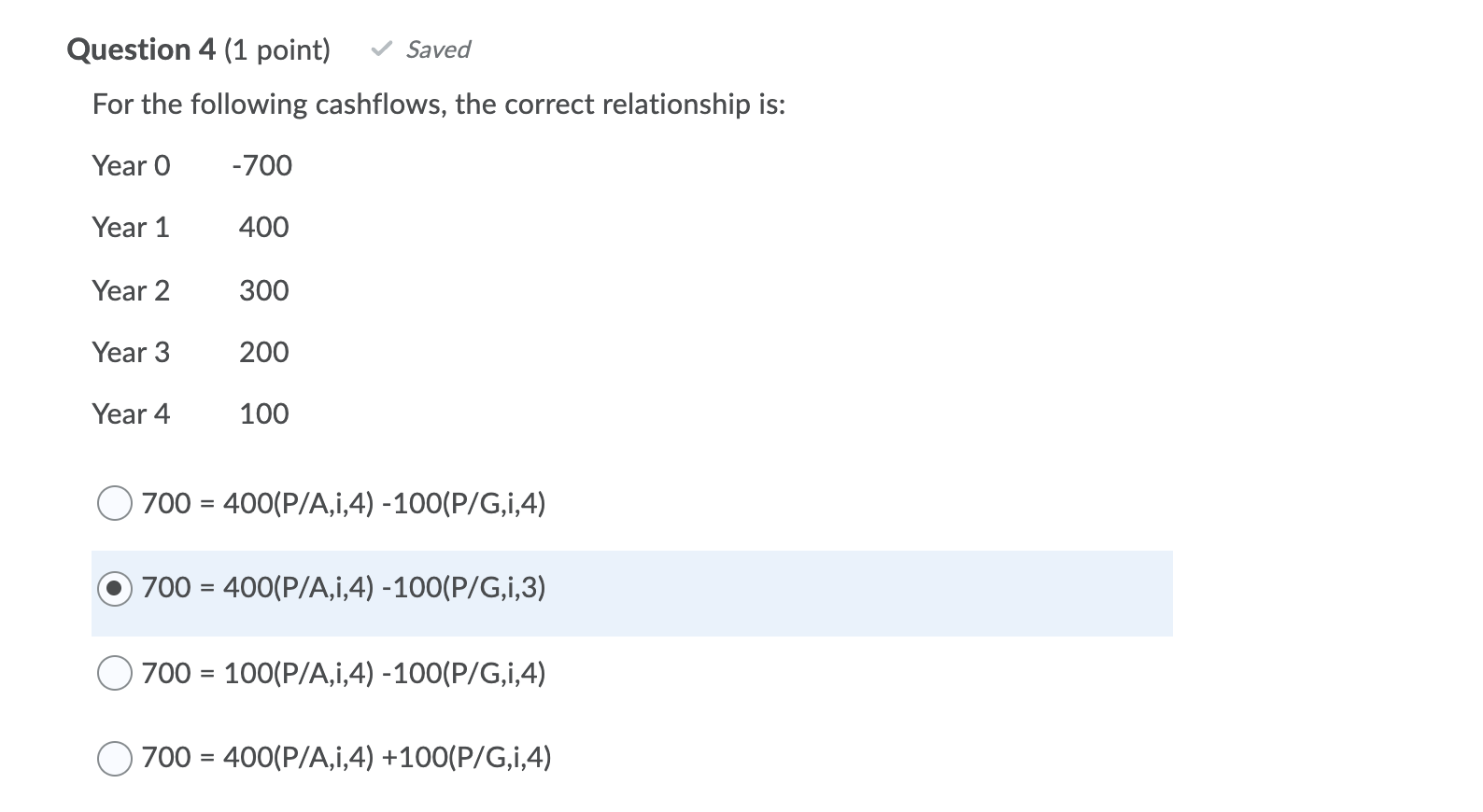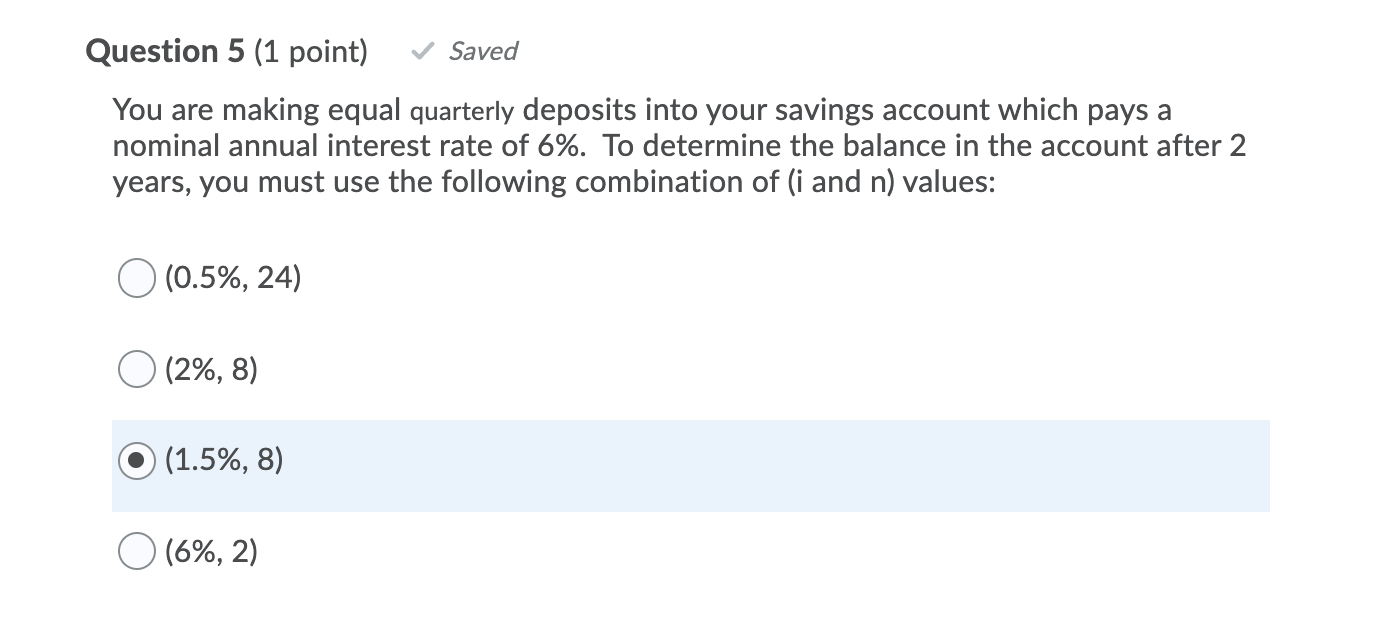Hello! of these questions I have answered, I only got 3 correct. can I have help determining which i got wrong and what the correct answers are? Thanks!




Question 1 (1 point) Saved In an (A+G) series where A= 500 and G=50, the first cash flow of the A series is 500 and of the G series is: 0 550 50 Question 2 (1 point) Saved In an (A+G) series, the first cash flow is 1000 at EOY 3. To find the value of this series at EOY O, we need to use the following factors: O (F/P, i, n1), (P/A, i, n), and (P/G, i, n) O (P/F, i, n), (A/P, i, n), and (G/P, i, n) (P/F, i, n1), (P/A, i, n), and (P/G, i, n) Question 3 (1 point) Saved For the following cashflows, which of the following relationships is correct? Year o -$300 Year 1 80 Year 2 120 Year 3 160 Year 4 200 300 = 80(P/A,1,4) + 40(P/G,1,4) 300 = 80(P/A,1,3) + 40(P/F,i,4) = 300 = 80(P/A,i,4) + 40(P/G,1,3) 300 = 80(P/A,i,4) + 40(P/F,i,3) = Question 4 (1 point) Saved For the following cashflows, the correct relationship is: Year o -700 Year 1 400 Year 2 300 Year 3 200 Year 4 100 700 = 400(P/A,i,4) -100(P/G,i,4) = 700 = 400(P/A,i,4) - 100(P/G,1,3) = O 700 = 100(P/A,i,4) - 100(P/G,i,4) 700 = 400(P/A,i,4) +100(P/G,1,4) = Question 5 (1 point) Saved You are making equal quarterly deposits into your savings account which pays a nominal annual interest rate of 6%. To determine the balance in the account after 2 years, you must use the following combination of (i and n) values: O (0.5%, 24) (2%, 8) (1.5%, 8) (6%, 2) Question 1 (1 point) Saved In an (A+G) series where A= 500 and G=50, the first cash flow of the A series is 500 and of the G series is: 0 550 50 Question 2 (1 point) Saved In an (A+G) series, the first cash flow is 1000 at EOY 3. To find the value of this series at EOY O, we need to use the following factors: O (F/P, i, n1), (P/A, i, n), and (P/G, i, n) O (P/F, i, n), (A/P, i, n), and (G/P, i, n) (P/F, i, n1), (P/A, i, n), and (P/G, i, n) Question 3 (1 point) Saved For the following cashflows, which of the following relationships is correct? Year o -$300 Year 1 80 Year 2 120 Year 3 160 Year 4 200 300 = 80(P/A,1,4) + 40(P/G,1,4) 300 = 80(P/A,1,3) + 40(P/F,i,4) = 300 = 80(P/A,i,4) + 40(P/G,1,3) 300 = 80(P/A,i,4) + 40(P/F,i,3) = Question 4 (1 point) Saved For the following cashflows, the correct relationship is: Year o -700 Year 1 400 Year 2 300 Year 3 200 Year 4 100 700 = 400(P/A,i,4) -100(P/G,i,4) = 700 = 400(P/A,i,4) - 100(P/G,1,3) = O 700 = 100(P/A,i,4) - 100(P/G,i,4) 700 = 400(P/A,i,4) +100(P/G,1,4) = Question 5 (1 point) Saved You are making equal quarterly deposits into your savings account which pays a nominal annual interest rate of 6%. To determine the balance in the account after 2 years, you must use the following combination of (i and n) values: O (0.5%, 24) (2%, 8) (1.5%, 8) (6%, 2)










